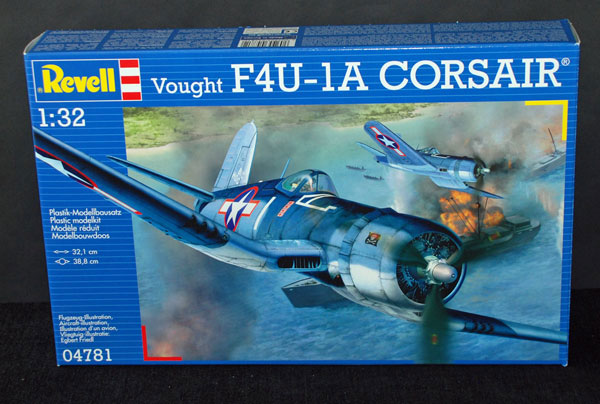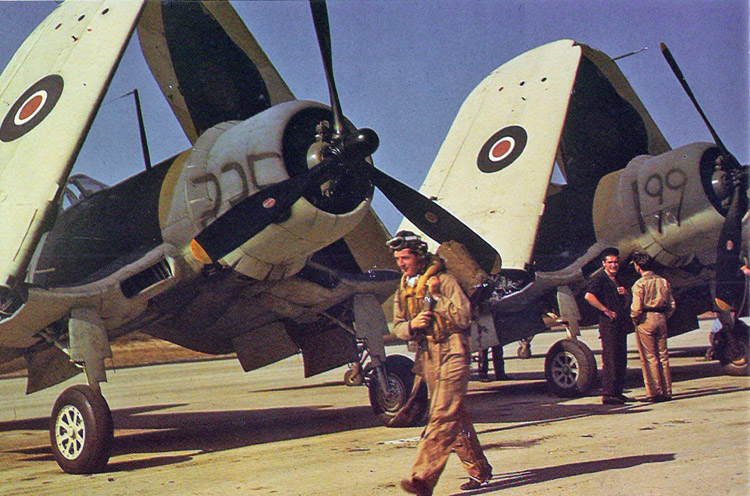
Short Feature Article by Dave Hockey
A note from Geoff…
You may remember that back in November 2014 I reviewed this kit when it was re-released by Revell with new decals at that time – see my full in-box review of the Revell F-4U-1A Corsair.
Clearly, this is a very old model but I have seen one or two excellent builds from the kit – notably many years ago from Peter Stern, my old friend whom I started up the IPMS Barnet branch with.
More recently, I saw David’s completed model and in many ways it reminded me of Pete’s build – a great job with the inclusion of some small additions here and there. No re-scribing, just doing the best with the plastic as supplied and ‘it just works’ for me – how about you?
Just before I hand over to David, here’s a little bit of background to the F-4U Corsair in FAA service.
There’s a nice You Tube video too:
A little bit of background to the F-4U Corsair…
The Vought F4U Corsair is an American fighter aircraft that saw service primarily in World War II and the Korean War. Demand for the aircraft soon overwhelmed Vought’s manufacturing capability, resulting in production by Goodyear and Brewster: Goodyear-built Corsairs were designated FG and Brewster-built aircraft F3A. From the first prototype delivery to the U.S. Navy in 1940, to final delivery in 1953 to the French, 12,571 F4U Corsairs were manufactured, in 16 separate models, in the longest production run of any piston-engined fighter in U.S. history (1942–53).
The Corsair was designed as a carrier-based aircraft but its difficult carrier landing performance rendered it unsuitable for Navy use until the carrier landing issues were overcome by the Royal Navy Fleet Air Arm. The Corsair thus came to and retained prominence in its area of greatest deployment: land based use by the U.S. Marines. The role of the dominant U.S. carrier based fighter in the second part of the war was thus filled by the Grumman F6F Hellcat, powered by the same Double Wasp engine first flown on the Corsair’s first prototype in 1940. The Corsair served to a lesser degree in the U.S. Navy. In addition to its use by the U.S. and British, the Corsair was also used by the Royal New Zealand Air Force, the French Navy Aéronavale and other, smaller, air forces until the 1960s. Some Japanese pilots regarded it as the most formidable American fighter of World War II, and the U.S. Navy counted an 11:1 kill ratio with the F4U Corsair.
After the carrier landing issues had been tackled, it quickly became the most capable carrier-based fighter-bomber of World War II. The Corsair served almost exclusively as a fighter-bomber throughout the Korean War and during the French colonial wars in Indochina and Algeria.

The Royal Navy received 95 Corsair Mk Is and 510 Mk IIs, these being equivalent to the F4U-1 and -1A. Brewster-built aircraft were known as Mk IIIs (equivalent to F3A-1D), and Goodyear-built aircraft were known as Mk IVs (equivalent to FG-1D). The Mk IIs and Mk IVs were the only versions to be used in combat.
The Royal Navy cleared the F4U for carrier operations well before the U.S. Navy and showed that the Corsair Mk II could be operated with reasonable success even from escort carriers. It was not without problems; one was excessive wear of the arrester wires, due both to the weight of the Corsair and the understandable tendency of the pilots to stay well above the stalling speed. A total of 2,012 Corsairs were supplied to the United Kingdom.
Over to you David…